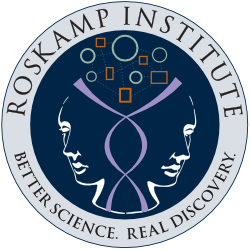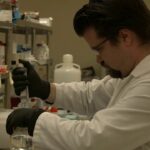The Roskamp Institute scientists have a long history of research examining the causes and potential cures for neurological disorders, particularly dementias such as Alzheimer’s Disease. During several decades of research it has become abundantly clear that one of the common denominators in neurodegenerative diseases is inflammation, in its many forms. Thus, the Institute has developed many techniques to measure and quantify inflammation in human and animal brains. Sometimes this inflammation is seen in the form of effects that are just local to the brain but sometimes they have a systemic component, meaning that chemicals and cells from the peripheral blood enter the brain and promote inflammatory processes.
With this background, it is very natural for Institute scientists to turn their attention to a clearly very potent neurotoxic chemical right here in the Sarasota area. That neurotoxin is called Brevetoxin and it is released from the Red Tide algae that has been destroying marine and bird life along the Gulf Coast. It has long been known that humans can suffer consequences of Brevetoxin exposure, most commonly in the form of lung and gastrointestinal effects depending on whether the Brevetoxin is inhaled or ingested. We, at the Roskamp Institute, are particularly interested to learn whether there is a central nervous system (CNS) component to human Brevetoxin exposure. In particular, we are interested to know whether there is a neuroinflammatory component.
We have therefore begun both human and rodent studies to investigate whether Brevetoxin exposure leads to accumulation in the brain and whether there are CNS neuroinflammatory effects. Currently, one of the studies is examining blood levels of Brevetoxin in individuals who may have been exposed to Red Tide and may have related CNS symptoms or signs. As the year progresses, we will be collecting samples from volunteers in the local area who either live or work close to the Gulf and we will be comparing their blood levels of Brevetoxin with volunteers who work or live further inland. In this way we hope to gather profiles of Brevetoxin exposure. Meanwhile in rodent studies, we are looking to see whether Brevetoxin accumulates in different organs in the body and what, if any, impact Brevetoxin has on the brain.
Surprisingly, there are virtually no studies of Brevetoxin levels in populations as exposed to the toxin as our community is in Sarasota. Our goal is to understand whether Brevetoxin from Red Tide poses a significant health risk to our local community. Of course, as with all studies at the Institute, we are always interested in prevention and/or therapeutic approaches to any CNS conditions and thus, as our studies progress we will always be thinking about potential ways to combat Brevetoxin, should it be shown to have significant neuroinflammatory or other CNS effects in humans. As always too, we will apply the highest standards of scientific rigor to these studies to ensure that we neither unnecessarily alarm individuals who have been exposed nor ignore potential human risk. We will, via scientific communications, provide updates as this important work progresses. We thank, in advance, volunteers who will take part in these studies as we thank all of the participants in our current and previous work at the Institute.
Learn more about how to participate in the Red Tide study at: https://www.roskampclinic.org/information/seeking-volunteers-for-clinical-study/ or call 941-256-8019 ext 3008.


